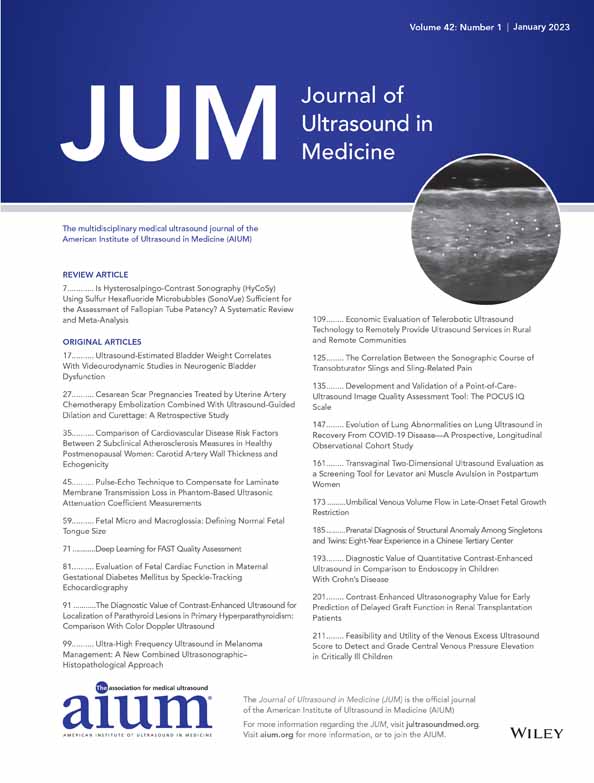Ultrasound-Estimated Bladder Weight Correlates With Videourodynamic Studies in Neurogenic Bladder Dysfunction
This work was supported by the John W. Duckett Endowed Chair in Pediatric Urology (S.A.Z.) and the William L. Van Alen Endowed Chair in Pediatric Radiology (K.D.). Drs Zderic and VanBatavia are founders and scientific advisors to UroGenie LLC (UroGenie.com) with support from National Institutes of Health R44 DK127835-01A1. Drs Back and Darge have received educational grant support from Bracco Diagnostics.
Abstract
Purpose
This retrospective study was designed to evaluate which lower urinary tract ultrasound parameter(s) could predict the results of invasive urodynamic testing which are the current reference standard in the evaluation of bladder dysfunction in children with spina bifida.
Materials and Methods
Fifty eight children with spina bifida undergoing video urodynamic evaluation and a renal bladder ultrasound as their standard of care were evaluated. Quantitative and qualitative ultrasound parameters were then correlated with the videourodynamic study results which served as the reference standard.
Results
For bladders with ending storage pressures above 15 cm H2O, there were increases in these ultrasound measured parameters: 1) bladder mass (P = .00019), 2) bladder/body mass ratio (P = .0059), and 3) wall thickness (P = .01). We defined the storage cost as the final storage pressure divided by the percentage of expected bladder capacity attained. These data were analyzed to compute receiver operating curves with assuming end storage pressures cutoff points of 15, 20, 30, and 40 cm H2O. The optimal area under the curve was found for a bladder weight of 65 g and a pressure cutoff of 30 cm H2O with a sensitivity of 75% with a specificity of 84%.
Conclusion
Bladder weight is independent of luminal volume, can be normalized to body weight, and may serve as a clinically valuable tool for noninvasive screening to define a subset of patients with neurogenic bladder with a higher likelihood of having abnormal videourodynamic results.




